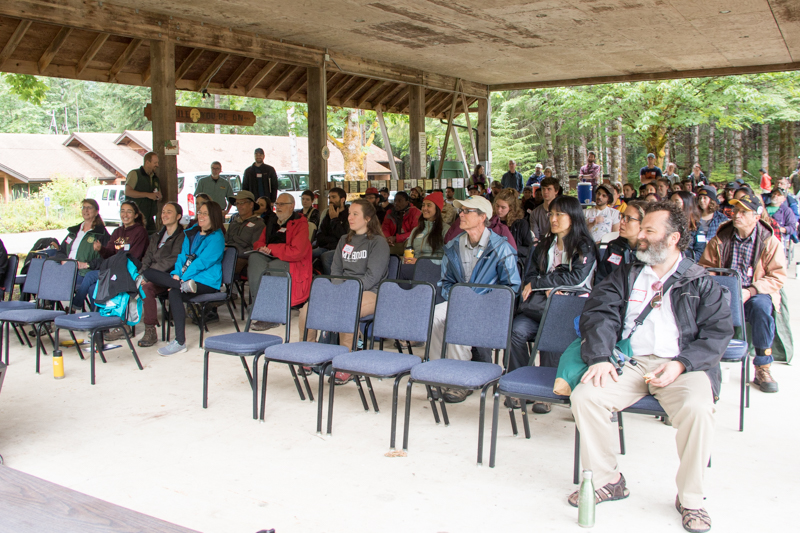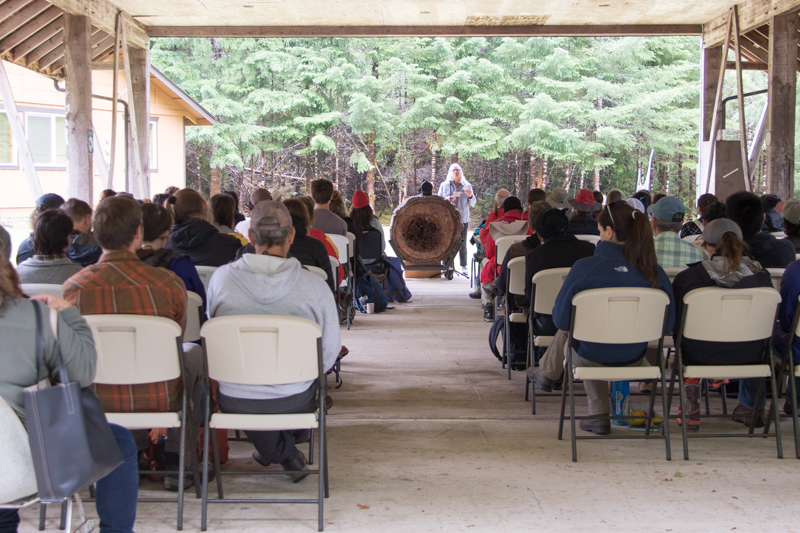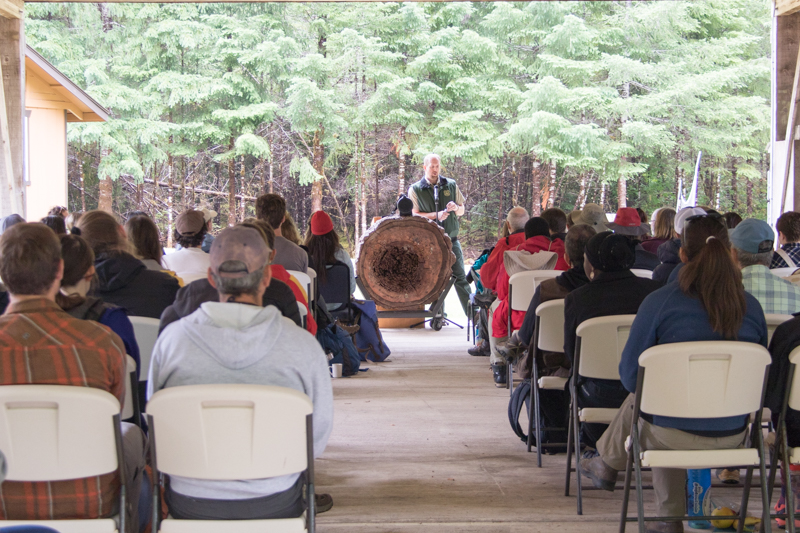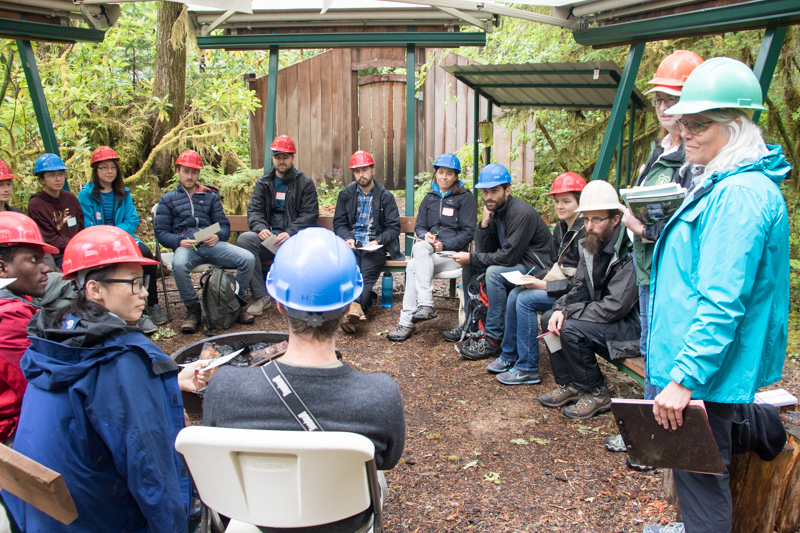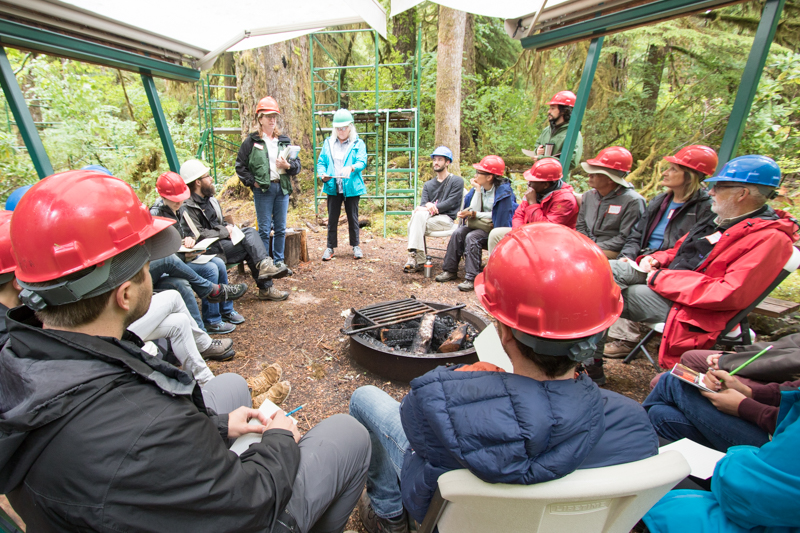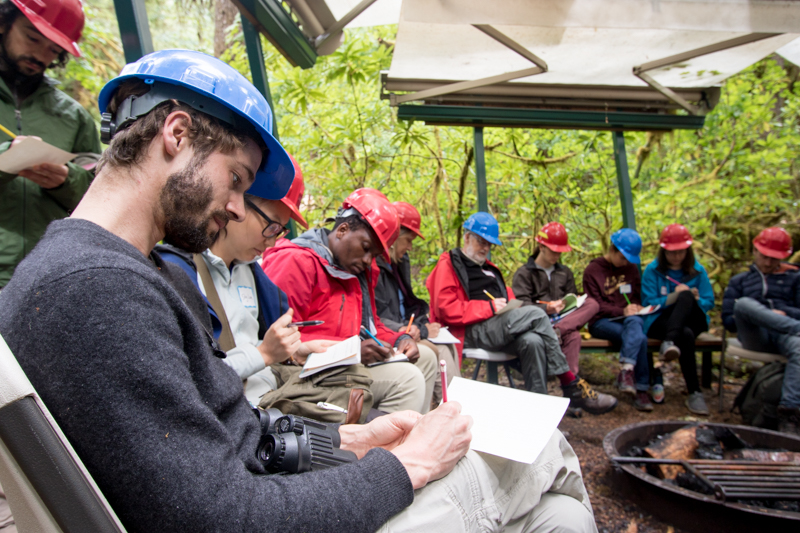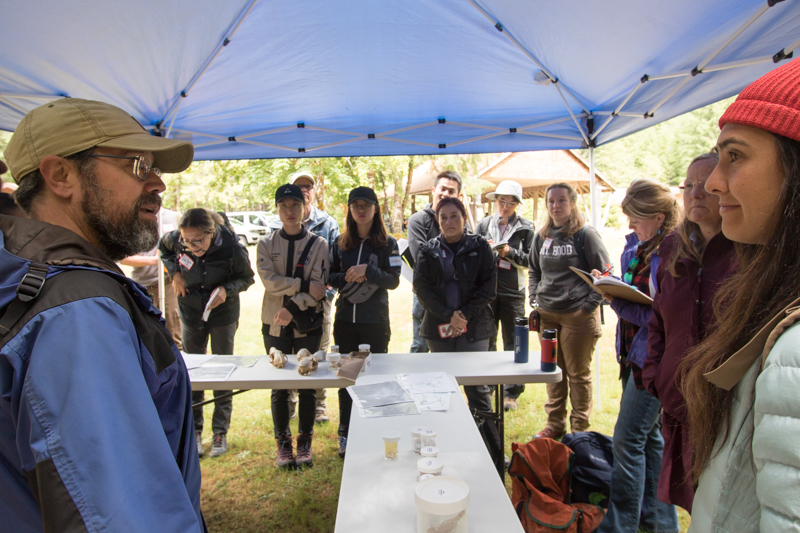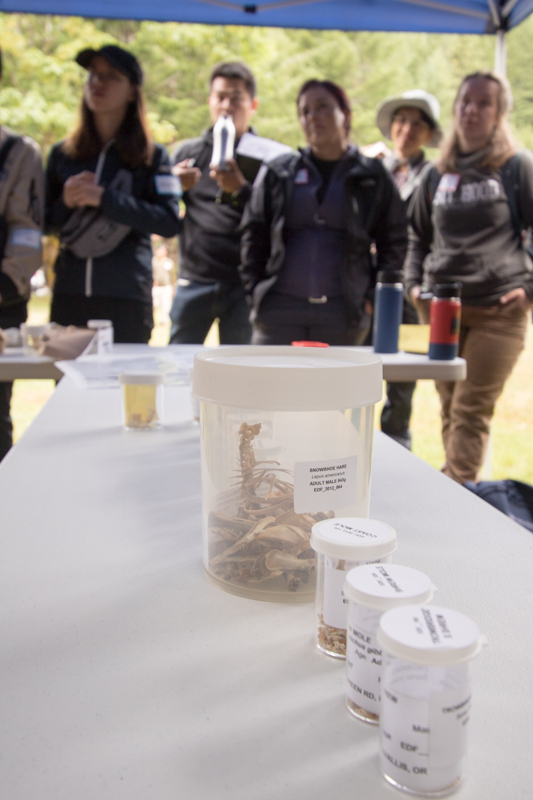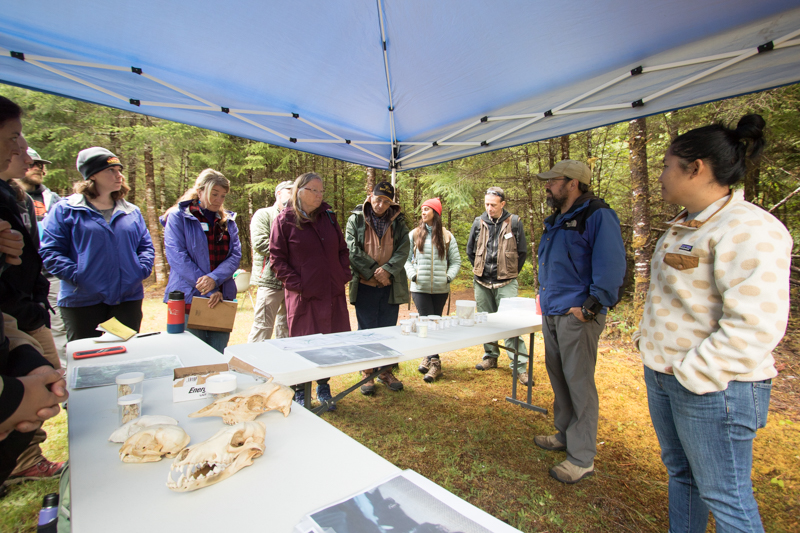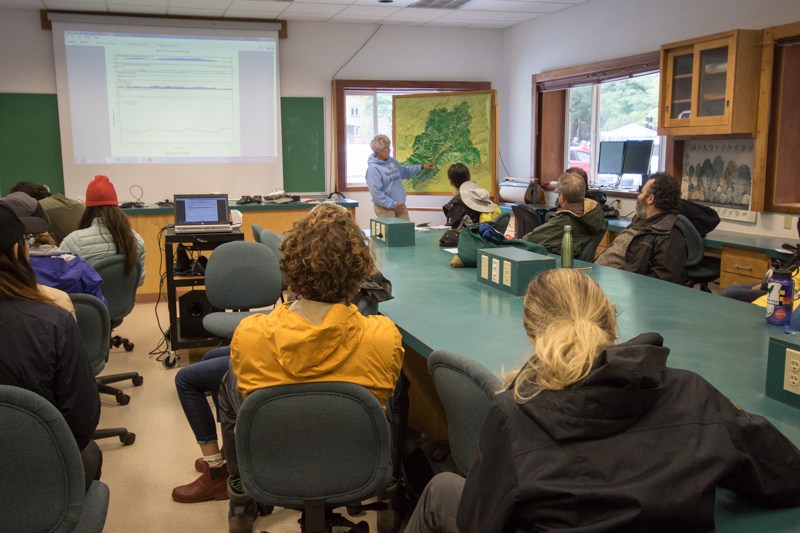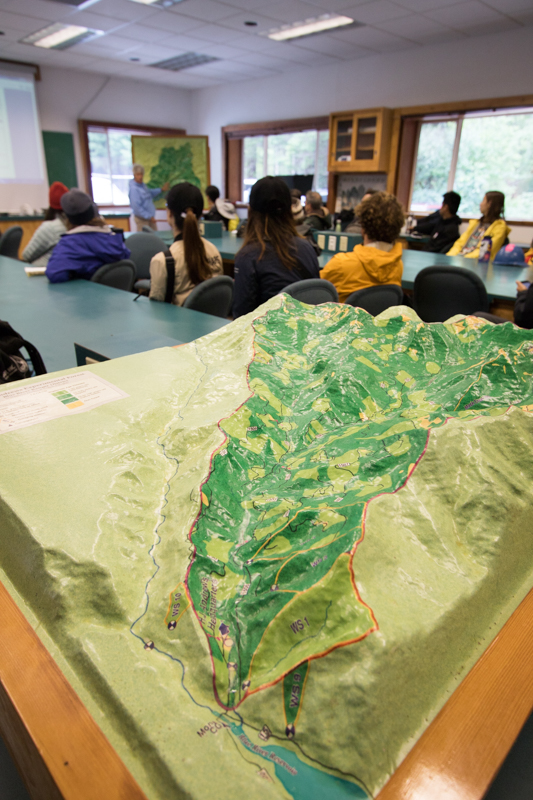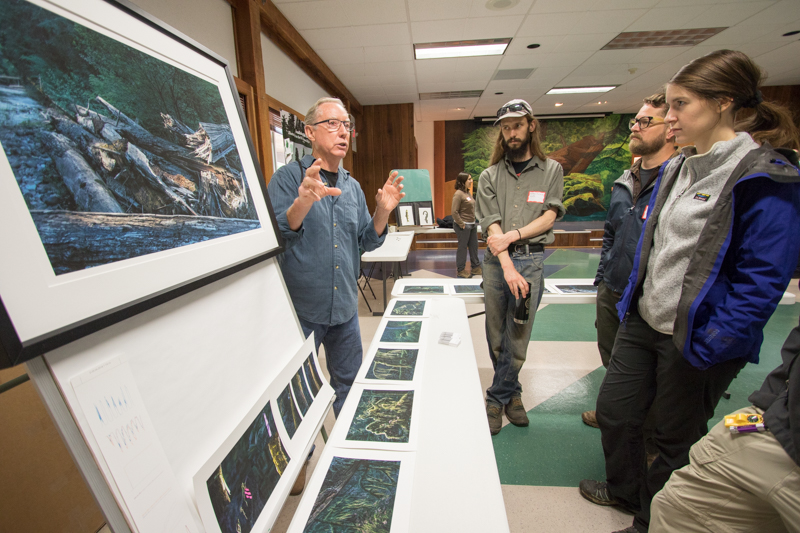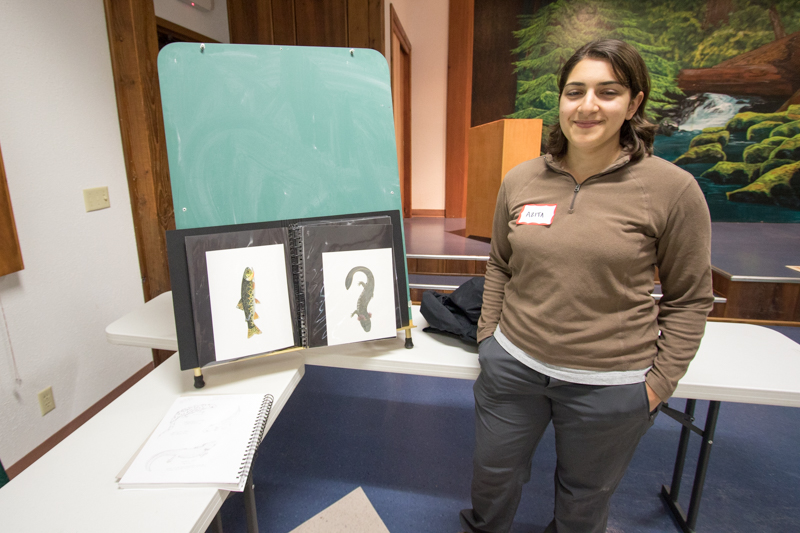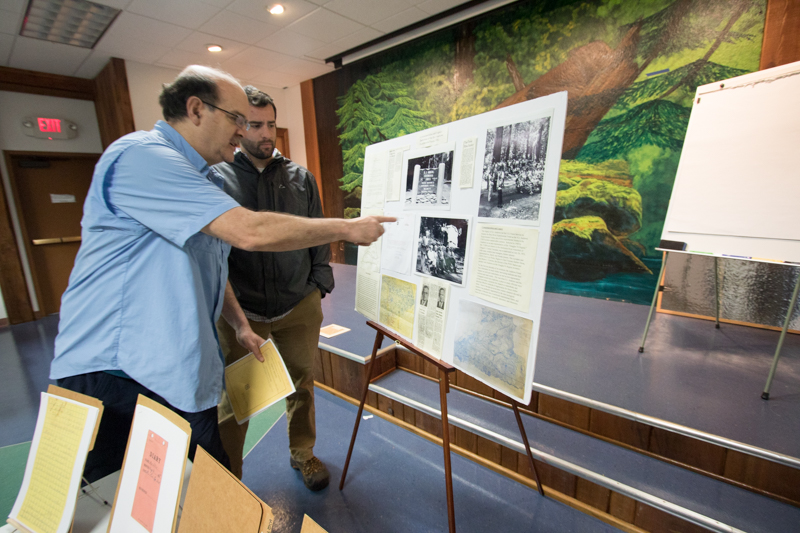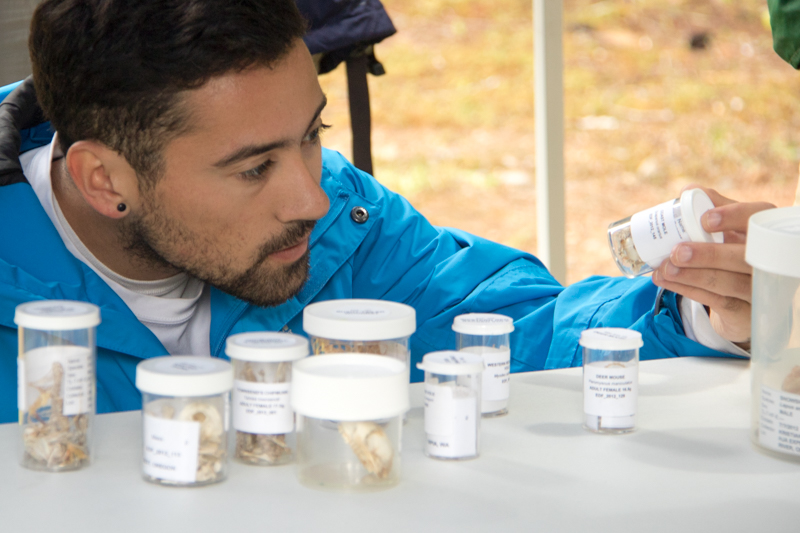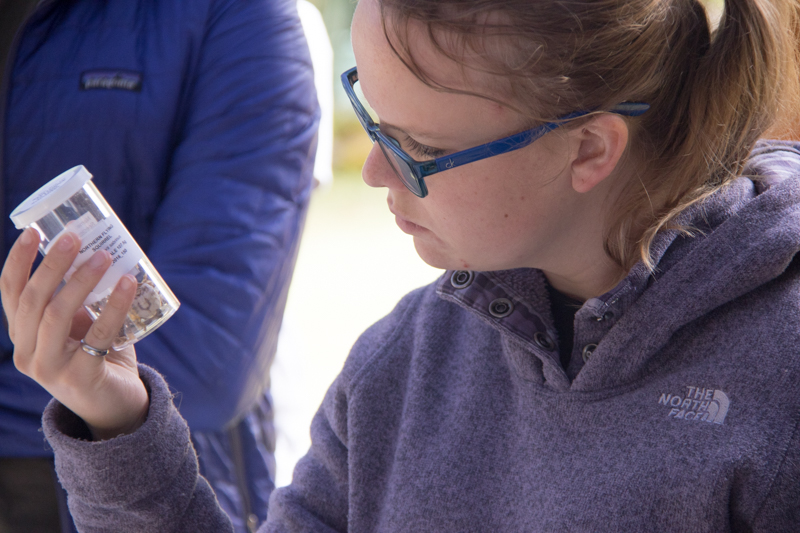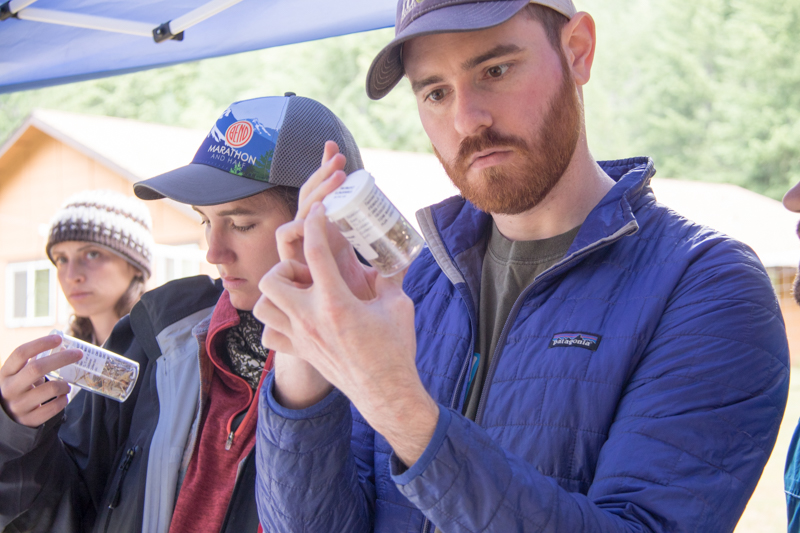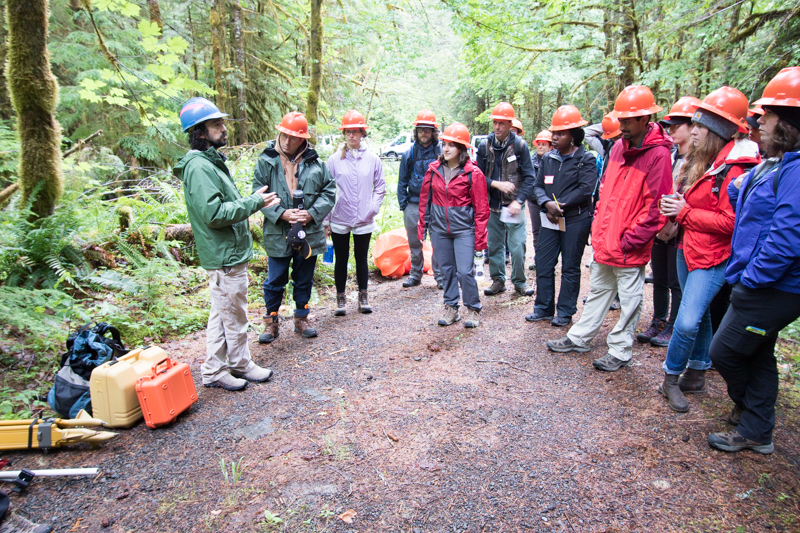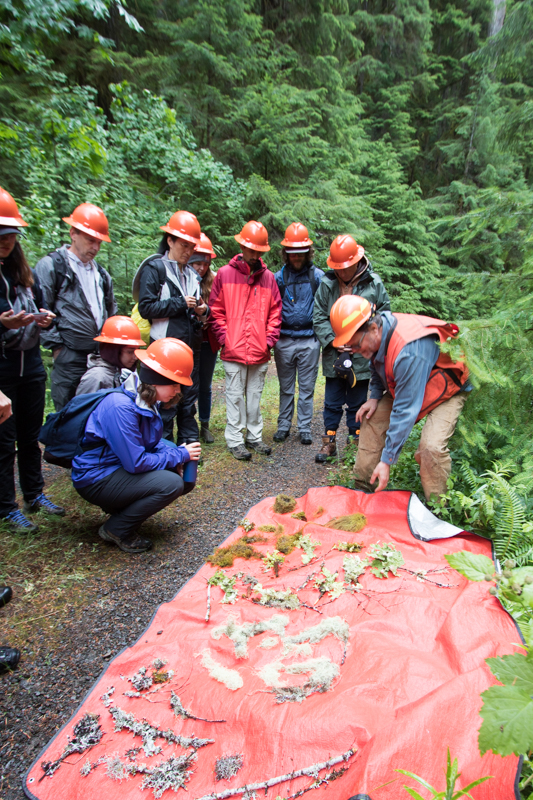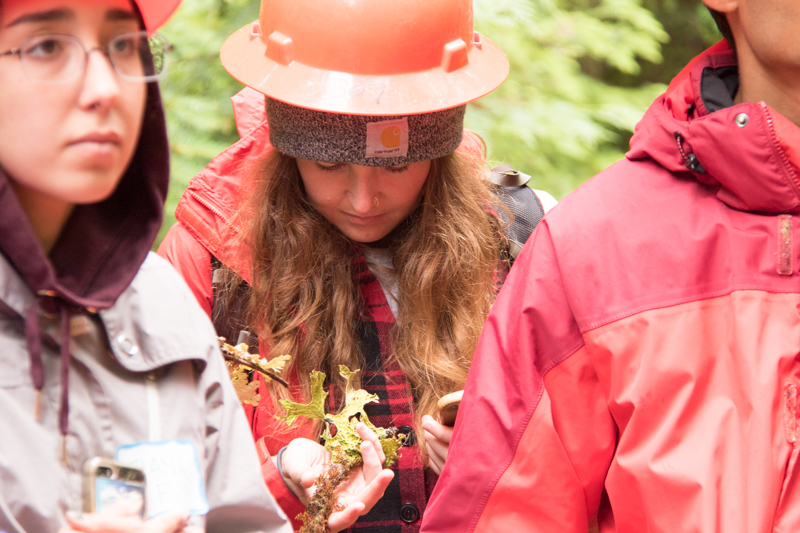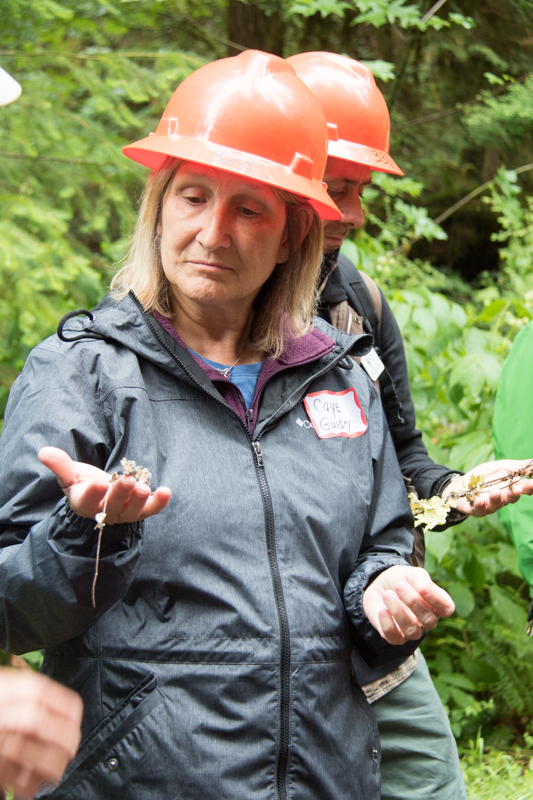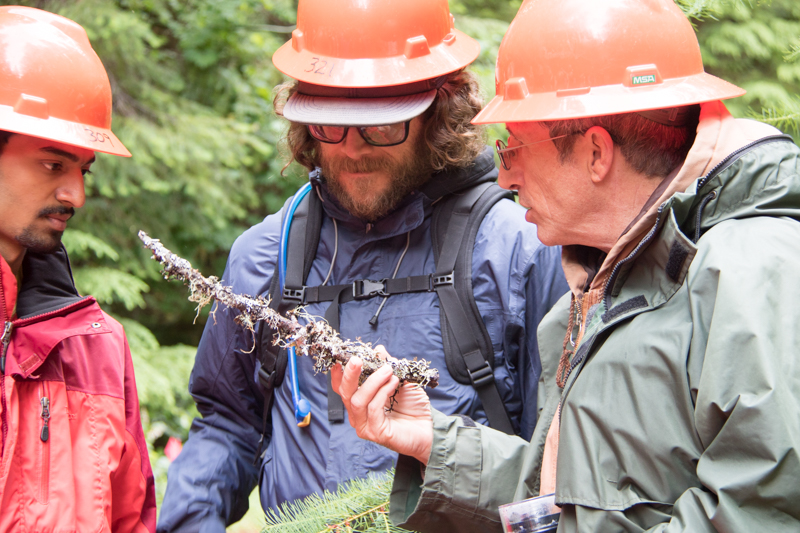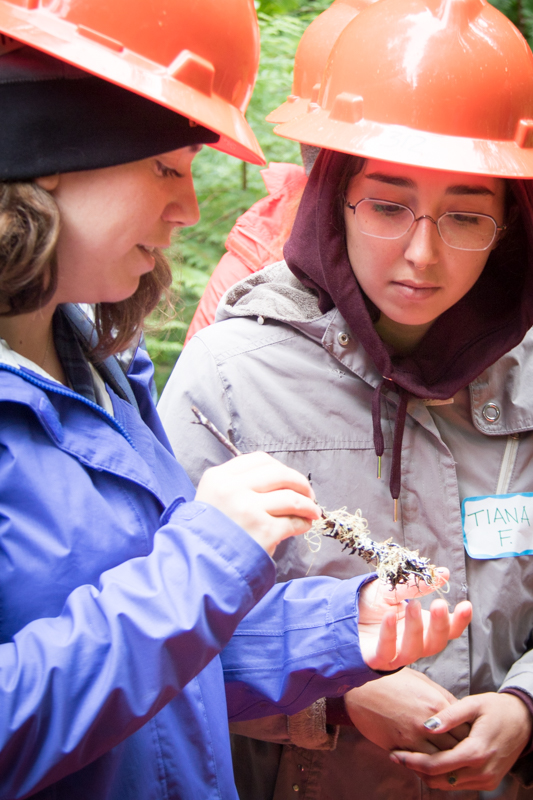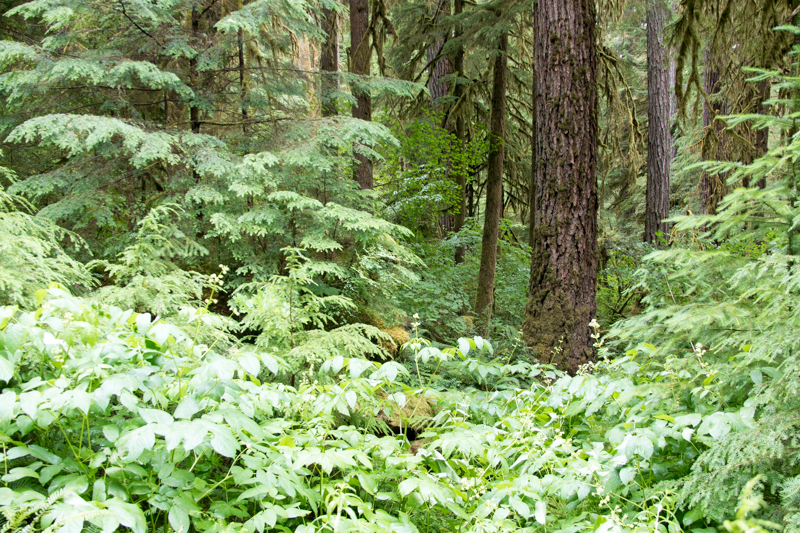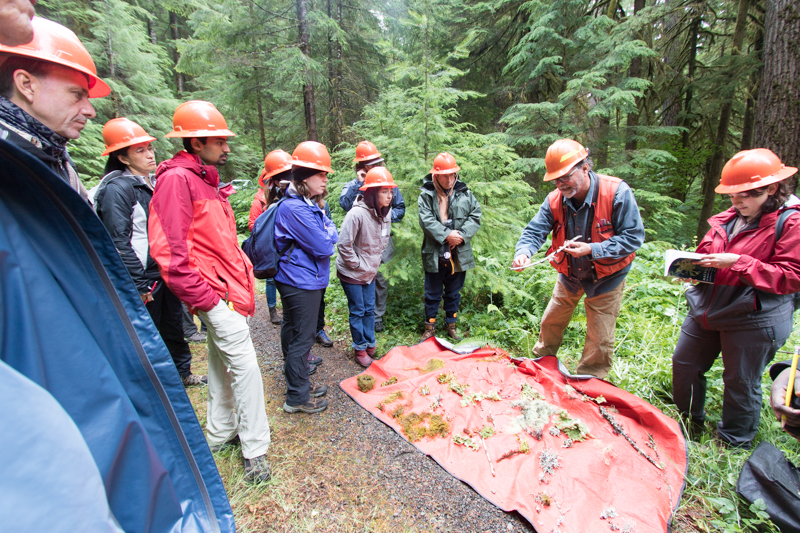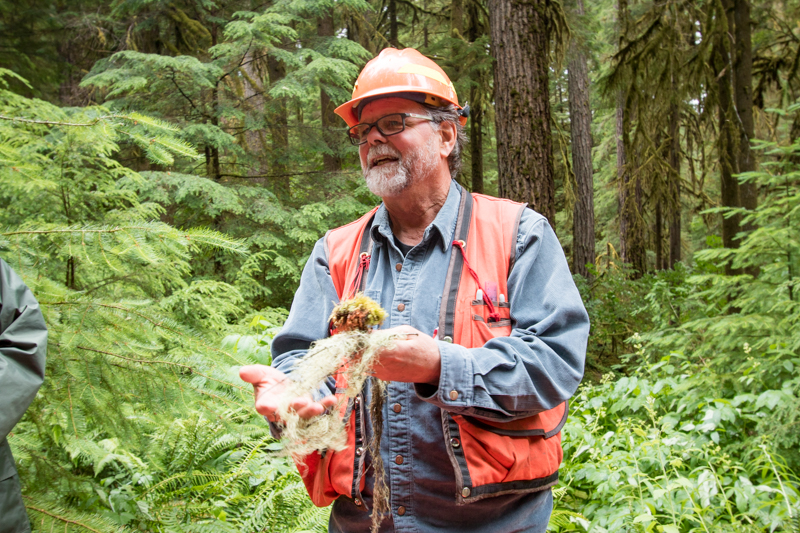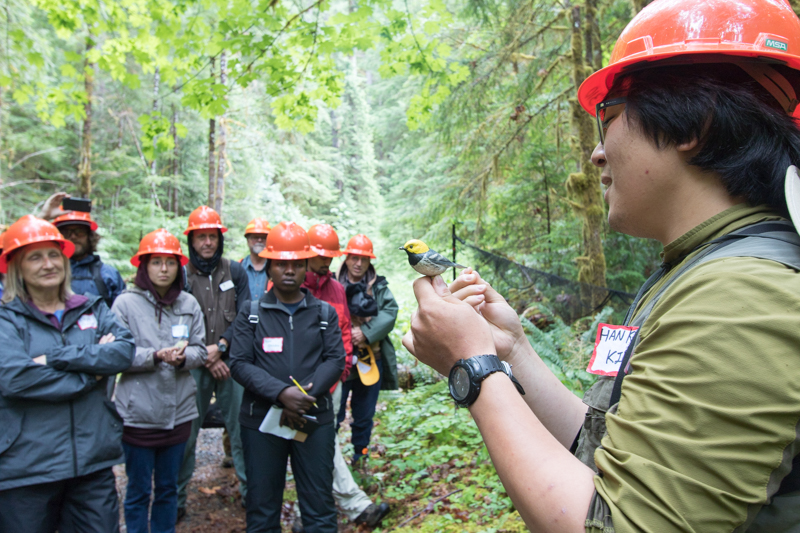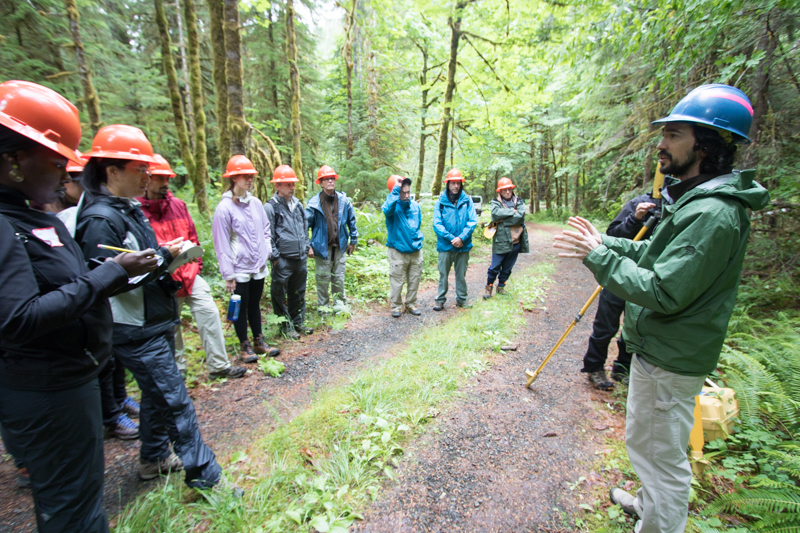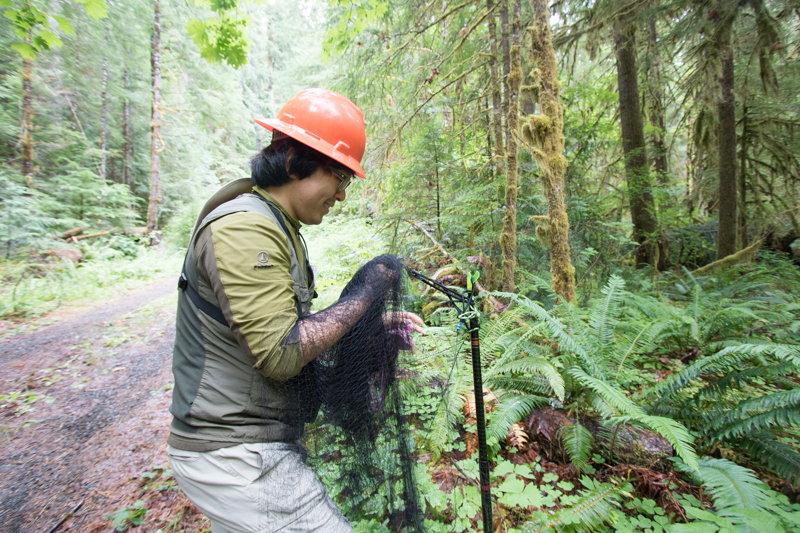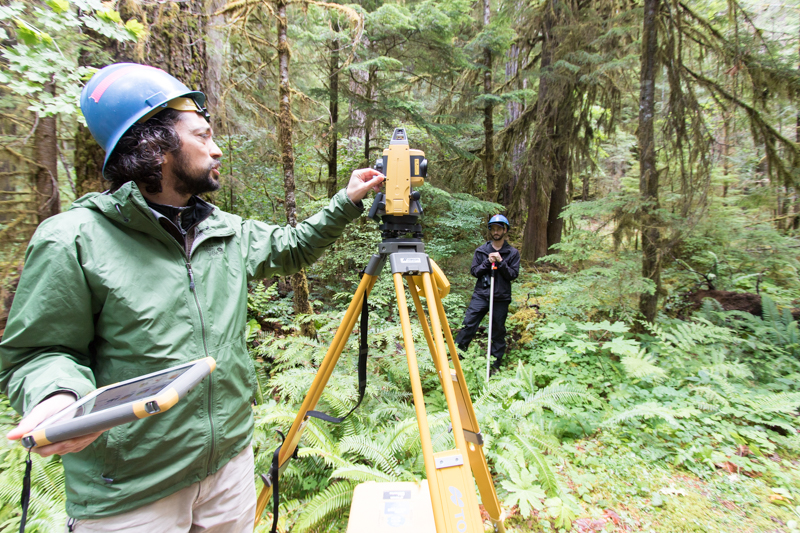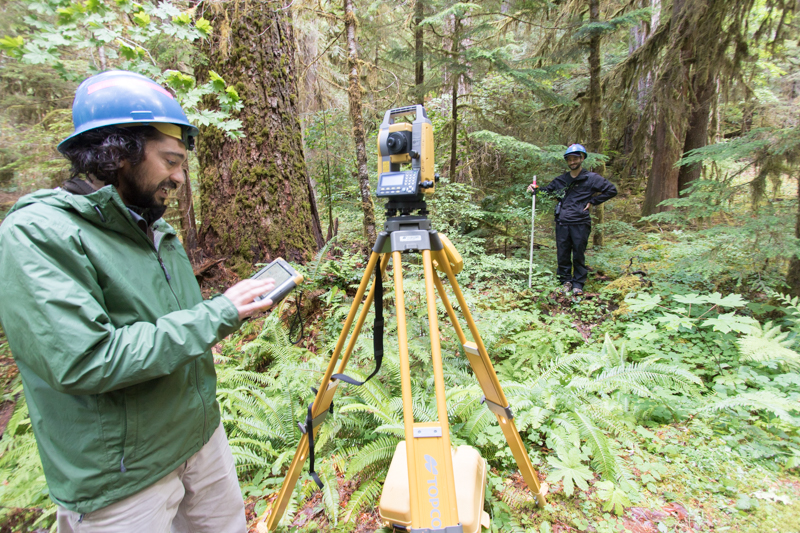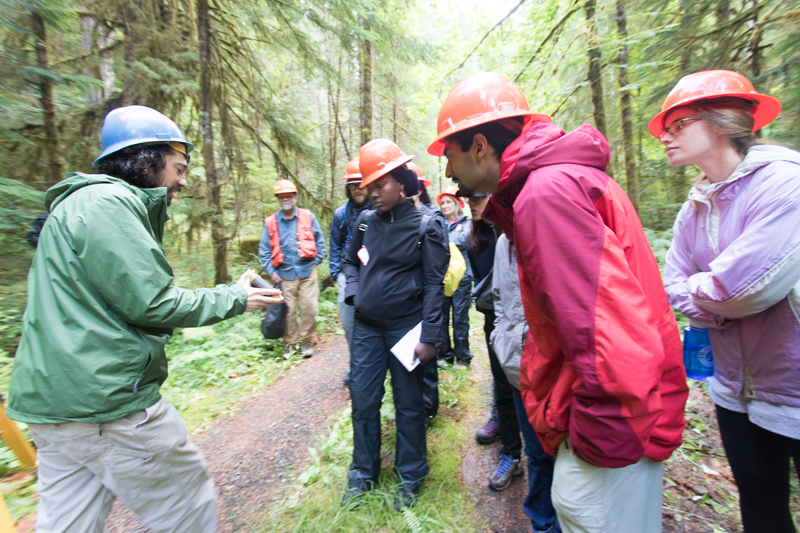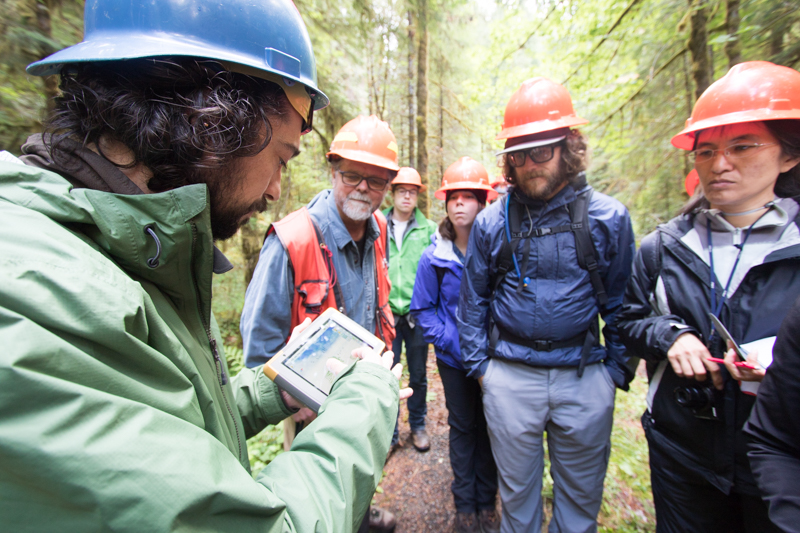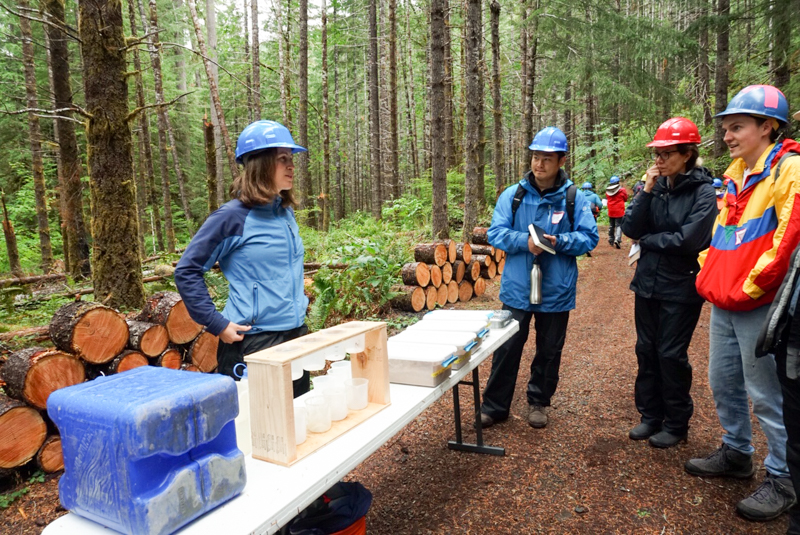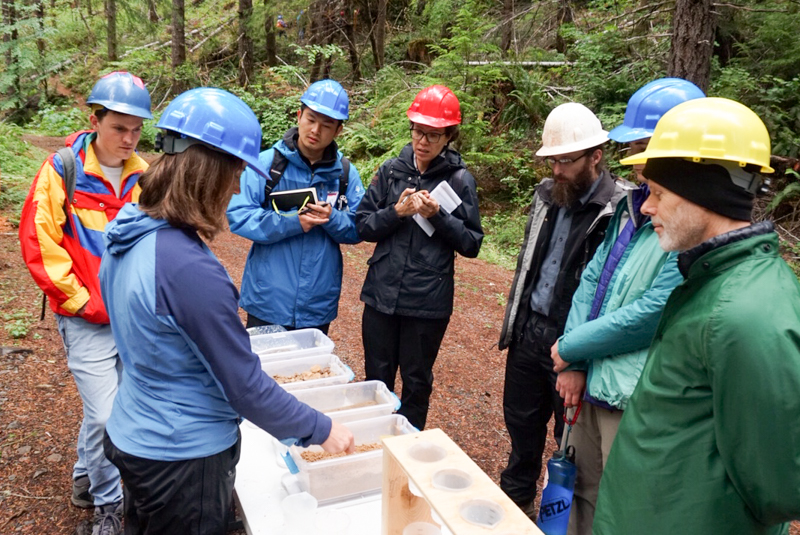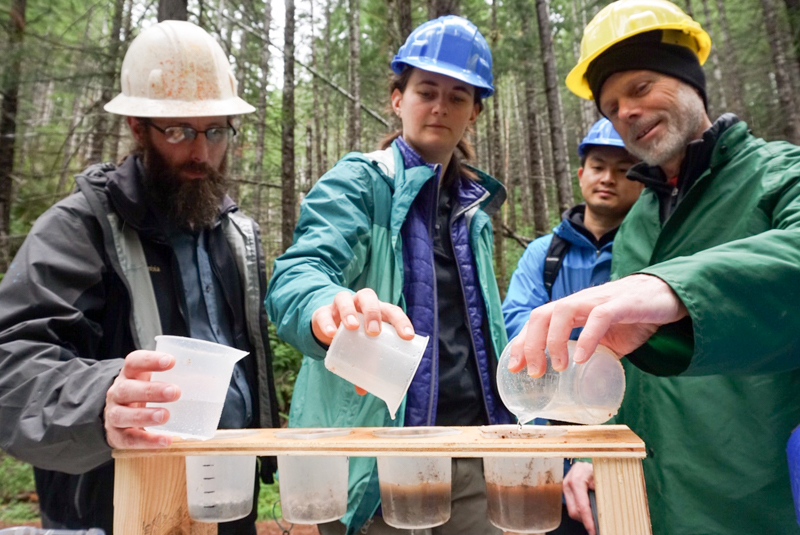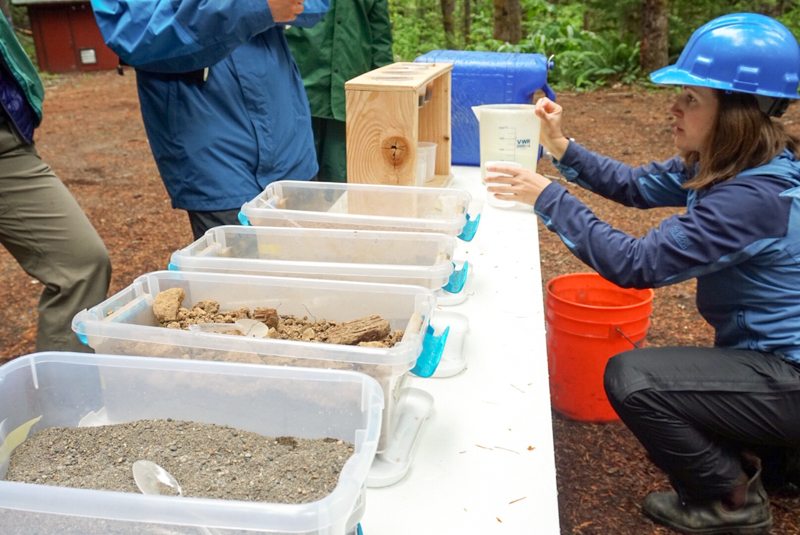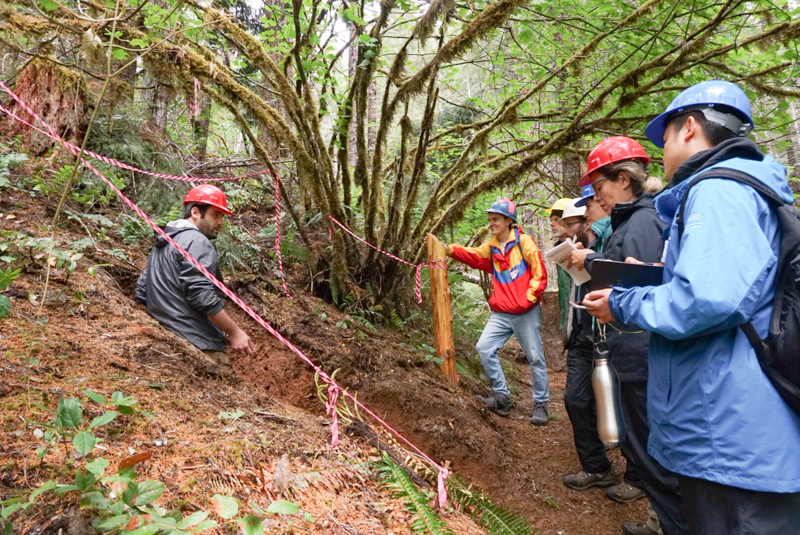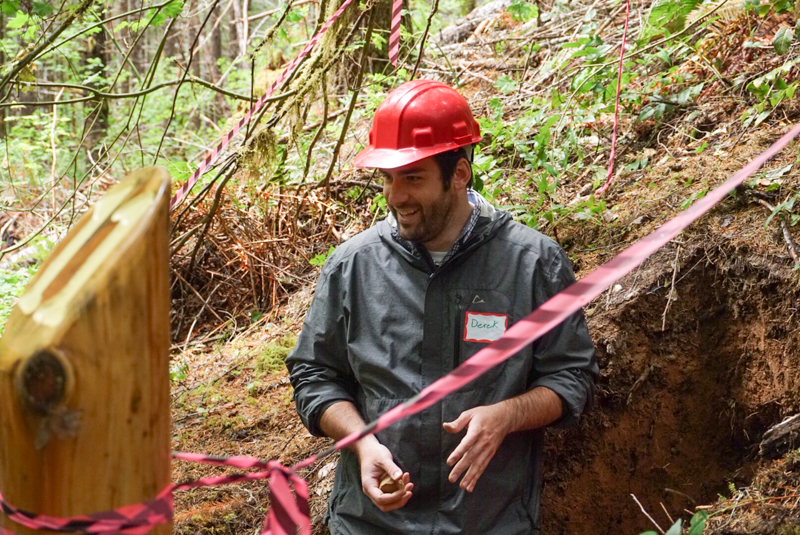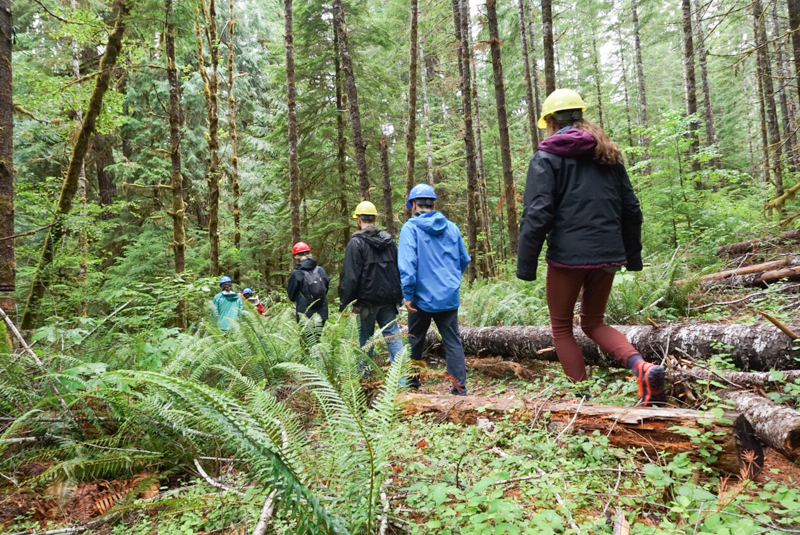Attendees in the pavilion for welcoming remarks
HJA Day 2019
HJA Day is the annual field tour of the HJ Andrews Experimental Forest Long-Term Ecological Research site. Field trips and presentations highlight the research, education, and arts and humanities work of the Andrews Forest program.
Attendees in the pavilion for welcoming remarks
Sherri Johnson, USFS PNW Station, speaks about the experimental forest
Darren Cross, USFS WNF, speaks about the Willamette National Forest
Michael Paul Nelson, OSU, speaks about the Long-Term Ecological Research program
Sherri Johnson and Cheryl Friesen lead a discussion on science-management partnerships
Cheryl Friesen and Sherri Johnson lead a discussion on science-management partnerships
Cheryl Friesen and Sherri Johnson lead a discussion on science-management partnerships
Attendees provide feedback on what's important in forest management
Attendees provide feedback on what's important in forest management
Steve Ackers (left) speaks about the spotted owl study
Specimen skeletons taken from owl pellets
Marie Tosa and Steve Ackers speak about mammals and spotted owls
Julia Jones speaks about airflow and microclimates within the Andrews Forest
A 3D map helps to illustrate the information from Julia Jones, David Rupp, and Sarah Frey, about airflow and microclimate
Fred Swanson (center) introduces the menu of arts and history on display
David Paul Bayles shares his creative concepts of photographing the Andrews Forest landscape
Leah Wilson explains her artistic perspective and approach
Student and illustrator Azita Roshani shares her illustrations of Andrews Forest icons, the cutthroat trout and the pacific giant salamander
Historian Samual Schmieding shares details from historical photographs and documents from the Andrews Forest
Steve Ackers and Marie Tosa speak about mammals and spotted owls
Marie Tosa shares information about mammals and small carnivores
An attendee inspects specimen skeletons taken from owl pellets.
An attendee inspects specimen skeletons taken from owl pellets.
Dave Shaw, Hankyu Kim, and Joe LaManna discuss the importance of ongoing, long-term vegetation measurements
Joe LaManna explains his new "big plots" which he and his crew are installing at the Andrews Forest this summer.
Dave Shaw (right) shares a spectrum of mosses, bryophyes, and lichens.
Dave Shaw explains that mosses, bryophytes, and lichens are distributed spatially across the vertical gradient of the canopy, espeically in older stands of trees
Attendees touch and feel and inspect samples of mosses, bryophyes, and lichen
Attendees touch and feel and inspect samples of mosses, bryophyes, and lichen
Attendees touch and feel and inspect samples of mosses, bryophyes, and lichen
Attendees touch and feel and inspect samples of mosses, bryophyes, and lichen
Attendees touch and feel and inspect samples of mosses, bryophyes, and lichen
Attendees touch and feel and inspect samples of mosses, bryophyes, and lichen
The old-growth forest in reference stand 2 of the Andrews Forest
Dave Shaw shares his enthusiasm about mosses, bryophyes, and lichens.
Dave Shaw points out identification of a lichen
Attendees touch and feel and inspect samples of mosses, bryophyes, and lichen
Attendees touch and feel and inspect samples of mosses, bryophyes, and lichen
Dave Shaw displays a lichen found in the forest canopy
Hankyu Kim explains about his research on the migratory bird, the Hermit Warbler
Hankyu Kim, with a model of a Hermit Warbler, explains how he tracks the movement of the birds across the landscape
Hankyu Kim shows how the mist net works, under the tall tree canopy
Hankyu Kim shows how the mist net works, under the tall tree canopy
Hankyu Kim talks about the tools he uses to band birds in order to track their movements in the landscape
Joe LaManna explains his new "big plots" which he and his crew are installing at the Andrews Forest this summer.
Hankyu Kim carefully puts away the mist net he uses to capture and tag birds
Joe LaManna showcases his laser survey, which he and his crew use to map out trees in the vegetation plots
Joe LaManna showcases his laser survey, which he and his crew use to map out trees in the vegetation plots
Joe LaManna showcases his laser survey, which he and his crew use to map out trees in the vegetation plots
Joe LaManna showcases his laser survey, which he and his crew use to map out trees in the vegetation plots
Joe LaManna shows the digital output from the laser survey. The outpul is a 3D digital model of the landscape and trees
Joe LaManna shows the digital output from the laser survey. The outpul is a 3D digital model of the landscape and trees
Karla Jarecke leads a demonstration on soils and the movement of water through soils
Attendees touch and sample different types of soils
Karla Jarecke leads a demonstration on soils and the movement of water through soils
Attendees touch and sample different types of soils
Attendees inspect different types of soils
Attendees experiment with how different types of soils hold and release water at different rates
Karla Jarecke illustrates the movement of water through soils
Attendees experiment with how different types of soils hold and release water at different rates
Derek Pierson, in a soil pit, speaks about soils and carbon
Derek Pierson, in a soil pit, speaks about soils and carbon
Attendees move through and activity that illustrates how easily water moves through soils of different porosity.
Attendees move through and activity that illustrates how easily water moves through soils of different porosity.
HJA Day attendees moving to the next presentation station

